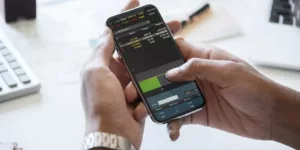Have you grown frustrated by repeatedly losing pips? Then you must review the risk management strategy you are employing when trading. A lot of traders want to master risk-free trading, but that isn’t easy to achieve. A lot of forex traders have turned towards forex portfolio management to ensure they are on the right track and they don’t end up losing pips. The best way to do that is by maintaining a solid trading routine, since that mitigates your risk, and is something all professional traders excel at.
If you want to learn about why you should get into forex portfolio management and how to become better at risk free trading, then here are some questions that will help you. There is advice on how to create a solid trading routine, which will help limit your trading losses.
Do you understand risk management?
When you’re sure that you are ready to trade, you must ask yourself this question, since it is imperative that you understand the value of risk management. As a trader your focus is on building your capital and protecting yourself against losses. Therefore, you should focus on obtaining small but consistent profits, because there is no luck involved. It is important you understand that when you trade on big positions the element of risk is greater and you can potentially wipe out your capital.
Are you ready to trade?
This must seem like an obvious question, but a lot of new traders get carried away when trading. It takes plenty of experience in placing trades before you start making quick profits, and you must be ready to sustain some heavy losses as well. The best advice is to either practice on a demo account before trading with real money or acquire forex portfolio management when trading.
Are you trading with funds you can afford to lose?
This is one of the most important aspects of trading, because any assets or money you are trading with should be collateral. You should be able to afford losing that money, because trading with money that you need is guaranteed to set you on the path to failure. You shouldn’t jump into trading if you don’t have the money to trade currently.
You can practice trading on demo accounts to hone your skill. You may need around $1000 to begin trading in Forex, so make sure that you can afford to lose that amount before you get in.
Is your mindset correct?
You should be in the right frame of mind before you commit to a trade, because when you’re suffering from emotional distress or are distracted, it is best to stay clear of the market. A lot of traders tend to neglect their mental and physical health, and both are important when you are trading. It is imperative that you are in good health when trading, because your health impacts on your trading performance.
Do you have a conflicting open position?
All traders must choose a currency pair before they place a trade, and you should check to see if you have any reciprocal positions that are open. If there are open, then the traders will cancel each other out, and you will not manage get anything from the trade.
Can you give a clear reason for taking this trade?
If you want to indulge in risk free trading, you must set clear rules for yourself. One rule is checking whether you have a legitimate reason for taking a trade, because it helps improve the profitability of the trade. This will clear any doubts about the trade and help you win more trades as well.
Have do I setup a stop loss & take profit level?
A lot of traders have different tools they use to protect their capital, and one of the best ones is the ‘Stop Loss’, which is an acceptable loss threshold set up by traders in their forex portfolio management platform. This instructs brokers to automatically close the trade, should losses exceed the threshold. This helps mitigate risk, but that depends on where you place the ‘Stop Loss’.
The ‘Stop Loss’, depends on the nature of the trade. So, if you have a long-term trade, you shouldn’t place a ‘Stop Loss’ closer to the entry, because the trade needs room to grow. You can apply a tighter Stop Loss for intra-day trades, so that your capital is protected if the market moves against you.
You should also set a ‘Take Profit’ level, which can help protect your profits. Some brokers offer leverage to amplify profits or losses, which can be tricky as well if lose most of your trades. For instance, if a broker offers you leverage of 100:1, then traders can place a $10,000 trade, with only $100 capital.
This level of leverage allows traders to enhance their profits by a factor of 100, but their losses will also increase by 100 as well. Leverage increases the chances of you losing your capital, and there have been a lot of instances where traders lost their account capitals. So, if you’re new to trading, you should steer well clear of using leverage in the initial stages.
Have I checked currency pair correlation?
In forex trading, you will be betting the value of one currency, which will appreciate/depreciate against the value of another currency. Therefore, it is important that you look at something called ‘correlation’, which can either be positive or negative, and reflects the relationship of the two currencies. For example, let’s compare the EUR with the CHF, where both currencies are positively related. This means that if the price of the EUR increases, then the CHF does the same. This occurs because of the close economic ties between Switzerland and the EU.
Other examples of currency pairs that are positively related are the GBP/USD and EUR/USD. This means that is one pair moves in a direction the other will follow and tracking the positions of the currency can help you implement a risk-free trading strategy. However, you should also keep an eye on currencies that are negatively related, since trading with them can cause you to lose unnecessary pips. You must always trade based on the correlation of the currencies, which may not always be fixed. Therefore, you need to check the correlation from an open position before you begin trading.
Am I committed to letting this trade go?
If you are completely certain that you are willing to accept a loss from a trade, then you are ready to trade. However, if you’re worried about losing money, then you shouldn’t be trading, because one loss will lead to another and you will end up chasing old trades. When you get into forex trading, you must be willing to accept that you’re going to experience a lot of losses from your trade.
You should also be willing to stop trading, if your trade hits the Stop Loss. You must then have the determination to stop and move on, instead of carrying on, because that is how you lose your capital. It is imperative that you get help with forex portfolio management, so that you can enjoy risk free trading.








